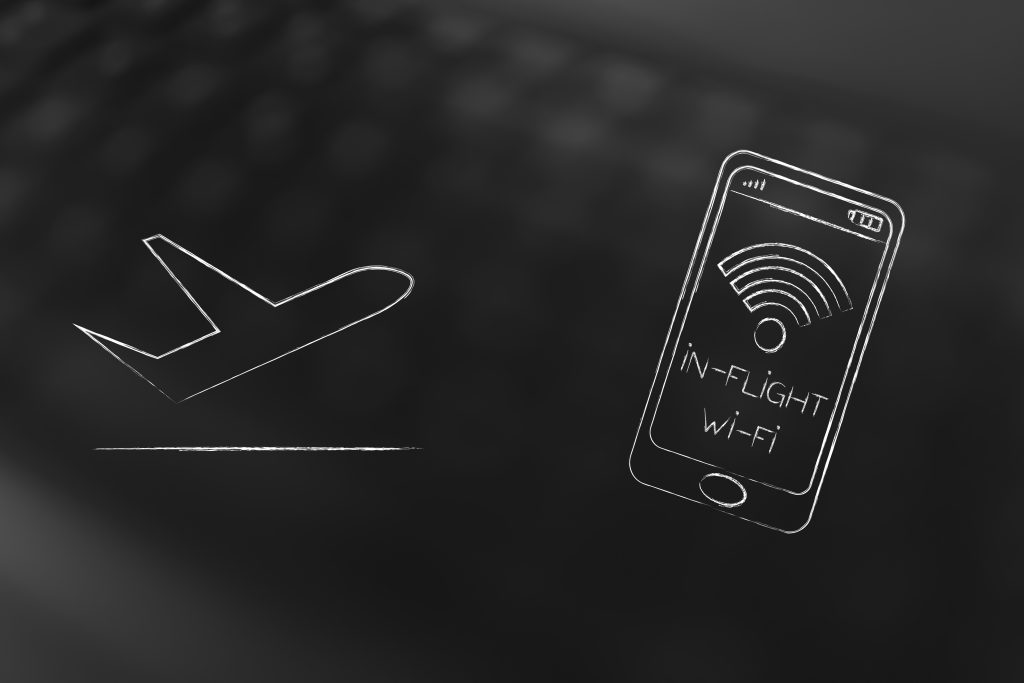


Travel demand has exceeded pre-Covid levels. More and more travelers intend to fly in the coming years. Travel demands are skyrocketing and passengers expect airlines to be more competitive with their offers to build brand loyalty and provide the best passenger experience. That's why many airlines are starting to offer free Wi-Fi on board. According to Avionics International, In-flight connectivity providers are shifting their focus to the next generation of networks (3G,4G,5G network), but the question remains:
First of all, why do planes don’t offer free wifi yet?
A simple answer is that it’s a good revenue stream when passengers pay for it. But that’s only a small part of why the change has yet to reach the entire industry.
Also, it’s not that easy as the process requires a huge investment of time and money, both from a Capex and Opex standpoint, as these companies outfit their entire fleet to provide customers with the kind of connectivity they are used to in the field. In fact, Ryan Ewing, founder of the Airline Geeks blog, said, “It can cost millions of dollars just to equip a plane with high-speed internet. It’s definitely not cheap. It depends a lot [more] on the actual hardware than it does on just flipping a switch and going, ‘Okay, can we make it free?’”
To provide Wi-Fi, aircraft must have a satellite antenna, a network modem, and a number of wireless access points accross the cabin.
Most airlines charge an internet access fee that allows them to upgrade their aircraft’s equipment to enable in-flight connectivity (IFC) and then pay for the bandwidth needed to provide passengers with the same equipment for 15 months until their jets have a lifespan of up to 20 years.
Making it free for every passenger who wants it is a CHALLENGE!
Nonetheless, people like Telesat commercial and product development director Manik Vinnakota believe that free IFC is not the goal of the future, but is already a reality.
“A number of airlines are already offering free, that boat has sailed. The problem airlines are grappling with is how to do that without burning money,” Vennakota said.
The number of airlines offering free in-flight internet is still very limited and varied.
For example, Air Canada allows free internet access for business class passengers, while economy class passengers pay on a tiered access model.
Airlines charge different fees for in-flight internet access, while some airlines offer fee-based options for free and offer faster connection speeds.
According to Vinnakota, Telesat is working with its aviation terminal, antenna, and other service providers to reduce direct purchases and other associated costs of IFC equipment since airlines are hyper-focused on justifying the cost of equipment and service for any new technology coming into their planes.
What is generally witnessed is 10% of the passengers, the ones who somehow pay for the connectivity (including business class) get an access to 90% of the bandwidth, and the rest of 90% pax rely on the remaining 10% of bandwidth, generally for messaging purposes.

Some airlines want to stand out among others, that’s when connectivity comes into play. In fact, demand for connectivity is high but the demand for “free connectivity” is sky high so when you offer this service for free, passengers would be delighted to be connected. So, the nuance is the capacity used and who is best placed to provide that capacity at a value justified by the airline.
However, the challenge here is to make sure that Airlines have the right amount of capacity and tools to enable that service. Because, the more people trying to share the bandwidth, the less there is for each person. So when there’s not a lot of bandwidth, that’s where the airlines charge a lot because they’re trying to ration it. It’s a little ironic that the worse the service, the more they charge, but it also makes sense.
In fact, Airlines are under pressure to get that exact uninterrupted broadband connection across the entire fleet for fear of annoying customers with high expectations. On the contrary, forcing people to pay for Wi-Fi can act as a deterrent to most aircraft, allowing paying customers to get better connectivity.
Khali Heath, senior director of product marketing at Intelsat, who also participated in the Connected Aviation Intelligence panel, said:
“It hasn’t been proven at scale today that you can roll out free Wi-Fi for everyone. Airlines are struggling with whether they’re putting their net promoter score (NPS) or their brand on the line to say that they offer free Wi-Fi, and if that turns out to be a less than satisfying experience that negatively impacts them in the long run. Delivering the kind of value that enables free connectivity for passengers at scale is a challenge we have yet to solve.”
And he is perfectly right! It is always better not to offer a service rather than offer a poor-quality service. Tiered data plans remain the best option for an airline.
According to the latest news from paxex.aero, Alaska Airlines has joined Southwest Airlines with flat rate Wi-Fi connectivity pricing ($8/day).
It’s interesting to know that JetBlue offers connectivity for free (free fleet-wide Wi-Fi), United Airlines offers it for $8/flight, and Delta Air Lines’ Viasat-equipped fleet is cheaper at $5/flight. However, Delta Air Lines CEO, Ed Bastian, plans to make connectivity free.
The generally witnessed KPI is that, to at least amortise the Opex, the airline must sell at least 30 data plans…per flight ! Which is currently far from reality.
Offering just IFC will no longer be a differentiator for airlines, instead, they will need to use connectivity in a way that differentiates them and that’s where free-of-charge access can come in. That is why Airlines that don’t currently offer it for free will need to figure out how to do so through value-added partnerships or lower prices for services and equipment.
Competitive pressure is apparently the reason why some airlines are lowering their prices on connectivity. This same pressure could pave the way for free Wi-Fi access in the near future.
However, quality service will be a good differentiator that airlines need to focus on rather than just offering free Wi-Fi onboard. Indeed, LEO satellites are increasing rapidly because they can provide higher speed, and lower latency connections to everyone in the world. Its concept plays an important role in meeting the growing demand for low latency connectivity, a trend we don’t see changing any time soon.
Check out our article on this topic: https://pxcom.aero/in-flight-connectivity/
TRAVELER’S MICRO-MOMENTS Home Capturing the Traveler's Micro-Moments 26 April 2022 microMoments, Technology, traveler Time Is No Longer Measured in Days,…
IFE TO THE RESCUE Home WHEN IFE COMES TO THE RESCUE OF FLIGHT ATTENDANTS! 25 June 2022 Digital Services, IFE,…
Digital AD: IVT-FREE Zone Home DIGITAL INFLIGHT ADVERTISING: AN IVT-FREE ZONE 20 May 2022 Advertising, IVTFREE, Technology In late 2015,…